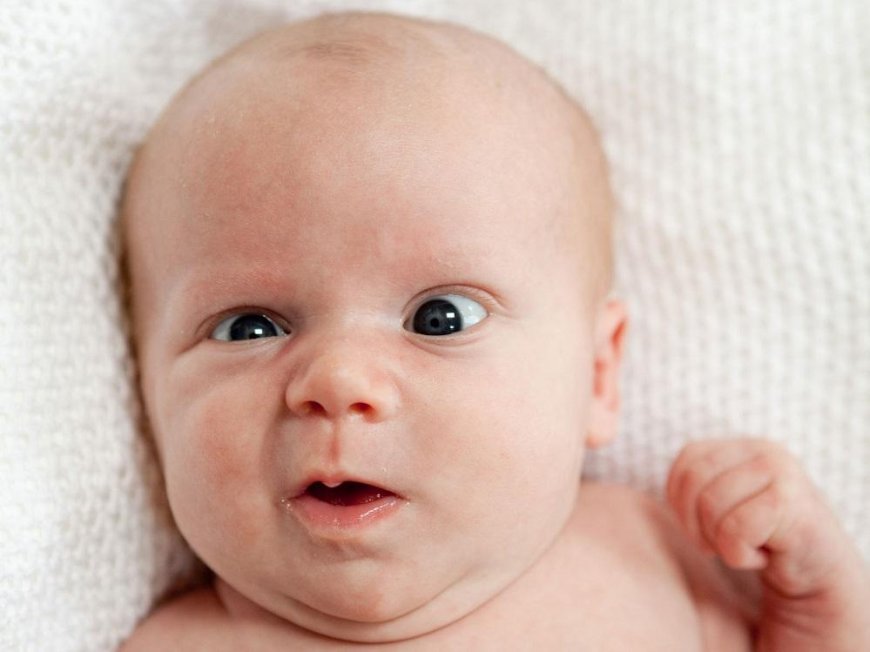Strabismus baby: causes, diagnosis and treatment
not a serious problem, your baby should be treated properly to prevent it from worsening. Strabismus baby: causes, diagnosis and treatment.

A child's squint, also known as a lazy eye, is when a child's eyes move in an uncoordinated manner. While this is not a serious problem, your baby should be treated properly to prevent it from worsening. Strabismus baby: causes, diagnosis and treatment.
A child's squint is an anomaly that affects his eyesight. It arises as a result of a lack of coordination between the eyes. Early detection plays a significant role as it enables therapy to begin as soon as possible. articalponing it over time increases the risk of blindness in the strabismus eye.
Strabismus is one of the most common optical disorders affecting infants and children. Lazy eye occurs in about 4% of children under the age of 9. The most serious consequences of strabismus are slower brain development, slower learning and assimilation, and loss of vision.
What is strabismus in a child?
Technically, strabismus results from an abnormality in binocular function. Eyesight works by two functions: binocular and monocular. They both develop from birth and mature until the baby is eight or nine years old.
In people with strabismus, the binocular function is damaged, which means that both eyeballs are unable to focus on the same object. For this reason, the information reaching the brain is very ambiguous.
In response, the brain ignores images that are less sharp. In this way, the body protects itself against the occurrence of double vision, called diplopia.
Even so, an eye in the wrong position continues to send images to the brain. However, due to this persistence, the eye will become œlazy over time and will begin to experience an irreversible decrease in the quality of vision.
Strabismus in a child and its causes
- The most common reasons of an ophthalmic nature include:
- Optical nerve malfunction,
- Reversible defects such as farsightedness.
Other causes for the development of a lazy eye in children include:
- Nervous system disorders caused by specific medical conditions, a high fever or very stressful situations.
- In addition, strabismus may appear in a child due to other disorders, such as cerebral palsy or hydrocephalus. Complications such as giving birth prematurely can also lead to the development of strabismus. In addition, strabismus can also appear in children with Down syndrome.
- It should also be mentioned that there are genetic predispositions that increase the likelihood of strabismus.
Types of lazy eye
The symptoms of this disorder usually appear in childhood. However, it is worth paying attention to the fact that strabismus can also develop in adults. Not all types of strabismus are the same.
Must Read: What capital to insure when hiring a Life policy?
- One-sided squint and alternating strabismus. In the first case, the fixed eye monopolized the field of view. In the second, both eyes alternately send data to the brain, ensuring that both eyes develop uniformly.
- Periodic strabismus. It occurs only in certain cases (illness, stress). It can also appear when an object is within a certain distance (near, mid, far).
According to the direction of the lazy eye
- It happens when the eye flies outward.
- Convergent strabismus. Appears when the eye flies inward. This is the most common type of squint.
- When one eye looks higher than the other.
- When one eye looks lower than the other.
Diagnosing strabismus in a child
Preventing a child from developing strabismus is difficult. However, its prompt detection and treatment can prevent the emergence of difficulties and health consequences, and even help reverse it. The eye examination, which should be performed in the third year of a child's life, plays a key role in preventing children from suffering from this condition.
If your pediatrician notices any problems with your baby's eyes, you should see an ophthalmologist right away. If your family has a history of strabismus, you should take your toddler to an ophthalmologist before the age of three.
Treatment of strabismus in a child
Treatment depends on the condition of the eyes and the severity of strabismus. The goal is to regain vision with both eyes. Depending on the individual case, therapy may include wearing special corrective glasses or surgery. The doctor may also order the weaker eye to be taped.
In the case of accommodative strabismus, optical correction is used. Young patients often need to wear glasses or contact lenses. In turn, visual therapy mainly involves exercising and sealing the eye.
In some cases, surgery is required. The surgeon will make a small incision in the tissue that covers the eye to reach the muscles.
Then he will have to correctly position the muscles in one eye or both. The whole procedure is quite simple, and the child will soon be able to return to everyday games without any problems.
